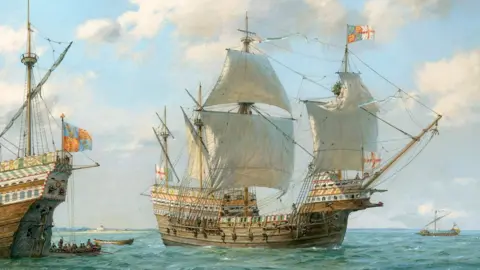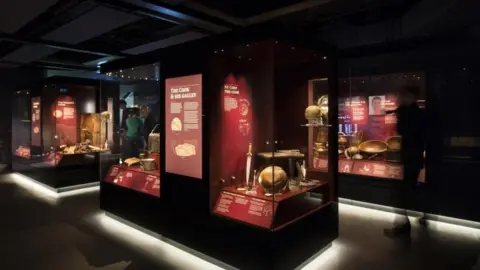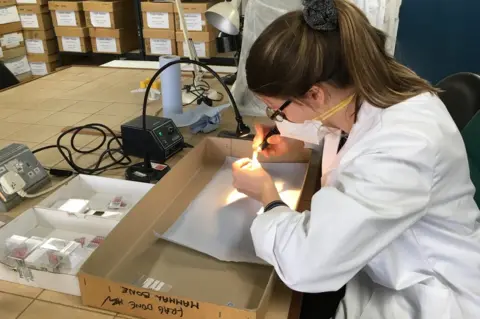Mary Rose crew was ethnically diverse, study finds
 Geoff Hunt/Mary Rose Trust
Geoff Hunt/Mary Rose TrustThe crew of King Henry VIII's warship the Mary Rose was more ethnically diverse than previously thought, research has suggested.
A study used the latest scientific techniques to offer clues about the ancestry, childhood origins and diets of its crewmembers.
It suggests at least three of them may have come from southern European coasts, Iberia and North Africa.
The ship sank in 1545 and is an exhibit at Portsmouth's Mary Rose Museum.
The research by Cardiff University, along with the Mary Rose Trust and the British Geological Survey, has been published in the Royal Society Open Science journal.
First author Jessica Scorrer said: "Our findings point to the important contributions that individuals of diverse backgrounds and origins made to the English navy during this period.
"This adds to the ever-growing body of evidence for diversity in geographic origins, ancestry and lived experiences in Tudor England."
 PA Media
PA MediaThe Mary Rose served Henry VIII for 34 years, and the vast majority of its crew perished when it sank during the Battle of the Solent.
In 1982 the wreck and 19,000 artefacts were recovered. The remains or partial remains of 179 crewmembers have also been found.
Researchers used a technique called multi-isotope analysis on the teeth of eight of the best preserved skeletons to help deduce where they spent their early years and what they ate.
A university statement said: "Chemical tracers from the food and water they consumed in childhood, which provide evidence for geographical location, remain within the teeth.
"This has allowed the team to explore the sources of their diets."
 Cardiff University
Cardiff UniversityDr Richard Madgwick, from the university's School of History, Archaeology and Religion, said: "By combining the latest scientific methods with insights from artefacts recovered from the ship, we have been able to reconstruct the biographies of eight people from the Tudor period in much more detail than is usually possible.
"This has shown their diverse origins and provided the first direct evidence for mariners of African ancestry in the navy of Henry VIII."
 PA Media
PA MediaDr Alexzandra Hildred, from the Mary Rose Trust, said: "The variety and number of personal artefacts recovered which were clearly not of English manufacture made us wonder whether some of the crew were foreign by birth.
"However, we never expected this diversity to be so rich. This study transforms our perceived ideas regarding the composition of the nascent English navy."
The eight crew members form the basis of a temporary exhibition called The Many Faces Of Tudor England at the museum.

Follow BBC South on Facebook, Twitter, or Instagram. Send your story ideas to [email protected].
